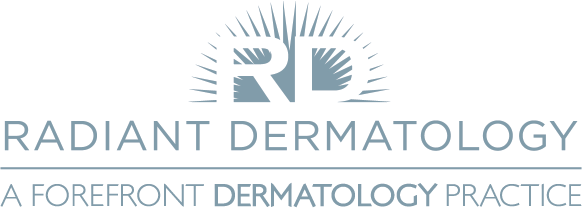 With summer quickly approaching, we think now is a good time to remind you about sun protection. Exposure to the sun’s rays can lead to many health problems including skin cancer and early signs of aging. Dermatologists recommend avoiding direct exposure whenever possible and using sunscreen every day that you will be in contact with the sun’s rays, even if it is cloudy or winter. If you leave your house and the sun is up, you should be wearing sunscreen.
With summer quickly approaching, we think now is a good time to remind you about sun protection. Exposure to the sun’s rays can lead to many health problems including skin cancer and early signs of aging. Dermatologists recommend avoiding direct exposure whenever possible and using sunscreen every day that you will be in contact with the sun’s rays, even if it is cloudy or winter. If you leave your house and the sun is up, you should be wearing sunscreen.
Choosing a sunscreen that offers the right level of protection can be difficult. What many people don’t realize is that many sunscreens available at grocery stores and convenience stores may not offer as much protection as your skin needs. That is why we’ve created this quick guide to help people understand sunscreen labels and choose sunscreen products that meet dermatologists’ standards for adequate sun protection.
Sun Protection Factor (SPF)
SPF is a measure of a sunscreen’s ability to prevent UVB rays from damaging the skin. The higher a SPF number a sunscreen has, the more effective it is to prevent reddening of the skin. For example, SPF 15 filters out approximately 93 percent of all incoming UVB rays, while SPF 30 filters 97 percent and SPF 50 about 98 percent. It is important to note that an ounce (one full shot glass) is the amount necessary to cover exposed skin with each application. Dr. Friedrichs and the AAD recommend using an SPF 30 or higher and reapplying at most every 60-90 minutes.
Ultraviolet Radiation Protection
Ultraviolet (UV) radiation is the part of the electromagnetic spectrum with wavelengths shorter than visible light but longer than x-rays. UV radiation that reaches the earth from the sun is classified as UVA or UVB radiation based on their wavelengths. The reason that this distinction is important is because some sunscreens will provide UVB protection but neglect UVA protection. To make sure that your sunscreen offers protection for both kinds, you will want to look at the active ingredients on the label. We recommend that our patients use sunscreens with zinc oxide and titanium dioxide as these provide the best broad-spectrum coverage.
Seal of Recommendation
One of the easiest ways to determine if a sunscreen measures up to dermatologists’ standards is to look for the Skin Cancer Foundation’s Seal of Recommendation. To earn the Seal of Recommendation, manufacturers must provide evidence that the sunscreen meets certain criteria for SPF and UVA/UVB protection and must demonstrate effectiveness for water-resistant claims. You can learn more about the Seal of Recommendation on The Skin Cancer Foundation’s website.
Radiant Dermatology offers many products with the Skin Cancer Foundation’s seal. Our favorite lines to recommend are EltaMD and Colorescience Sun Care Products. These sunscreens contain zinc oxide and have the Skin Cancer Foundation’s recommendation. If you are interested in EltaMD or Colorescience sunscreens or want to learn more about which sunscreen products will work best for you, schedule a consultation with Dr. Amanda Friedrichs.
